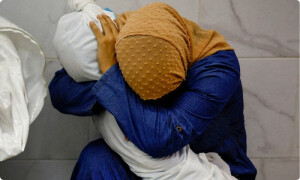
WARSAW: Polish scientists said on Thursday they have discovered the world’s first pregnant Egyptian mummy while carrying out scans on the 2,000-year-old remains kept at the National Museum in Warsaw.
“My husband Stanislaw, an Egyptian archaeologist, and I looked at the X-ray images and noticed a familiar sight for parents of three children in the belly of the dead woman — a little foot!” Marzena Ozarek-Szilke, an anthropologist and archaeologist at the University of Warsaw, told journalists.
Further analysis revealed the whole foetus and scientists working on the Warsaw Mummy Project believe the woman was between 20 and 30 years old and was 26-30 weeks pregnant.
“We do not know why the foetus was not taken out of the belly of the deceased during mummification,” said Wojciech Ejsmond from the Polish Academy of Sciences, another project participant. “That is why this mummy is truly unique. We have not been able to find any similar cases. This means that ‘our’ mummy is the only recognised in the world with a foetus,” he said.
Ozarek-Szilke speculated that there may have been an effort to “camouflage the pregnancy... or, perhaps, it had some significance related to beliefs and re-birth in the afterlife”. Based on an analysis of the hieroglyphs on the sarcophagus, the mummy was originally thought to be of a male priest who lived between the first century BC and the first century AD.
Scientists now believe it could be even older than that and are looking into the possible causes of death.
The mummy has not been opened but one scan showed the woman had long curly hair down to her shoulders.
The research has been published in the latest issue of peer-reviewed Journal of Archaeological Science.
“This is the first known case of a pregnant embalmed body... It opens up new possibilities of researching pregnancy in ancient times and practices related to maternity,” the article said. The scans were carried out by Affidea, a medical analysis company, using equipment provided by GE, both project backers.
The mummy was brought to Poland in the 19th century and became part of the antiquities collection at the University of Warsaw.
It has been kept at the National Museum since 1917, where it is on show to the public alongside the sarcophagus.
Published in Dawn, April 30th, 2021













































